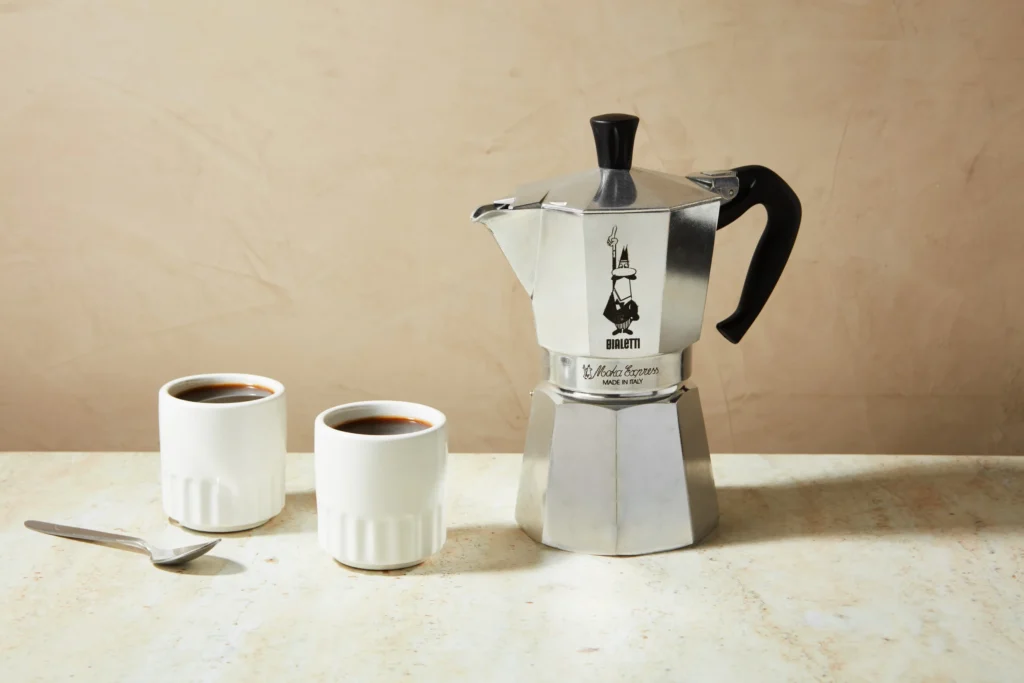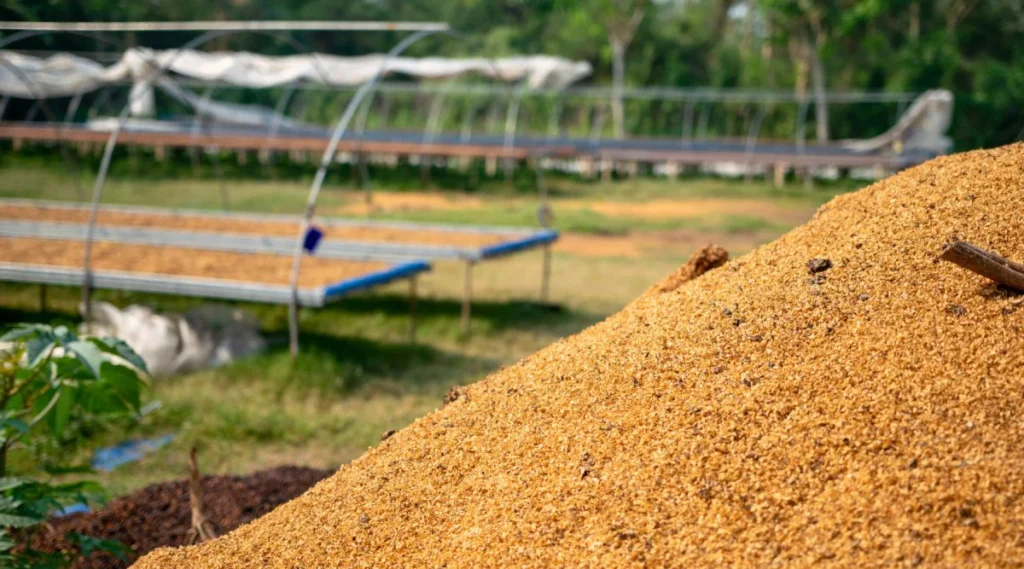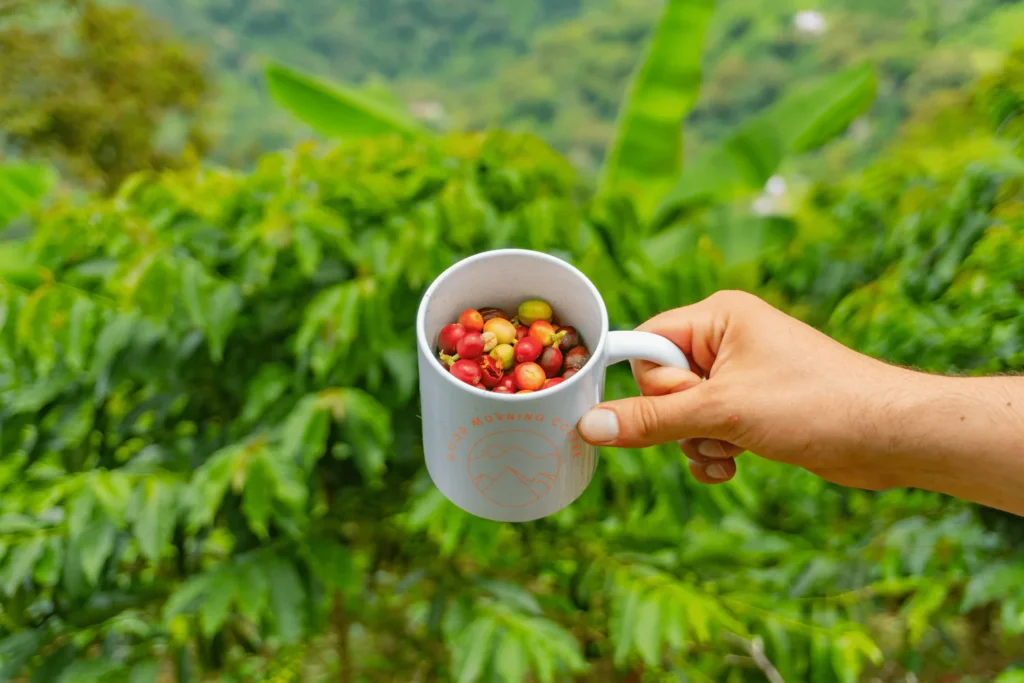Welcome to the ultimate guide to using a Moka pot! If you’re a coffee lover who enjoys rich, espresso-like brews without the need for an expensive machine, you’re in the right place. The Moka pot, a staple in many kitchens around the world, is celebrated for its ability to brew a strong, flavorful coffee that rivals that of professional baristas.
Today, we’re diving into the wonderful world of the Moka pot, a classic tool that brings the rich, robust flavor of espresso right into your kitchen. Whether you’re a seasoned barista or just someone who loves a good cup of joe, the Moka pot is a game-changer.
In this ultimate guide, we’ll cover everything from the history of this iconic brewer to tips and tricks for brewing the perfect cup. So grab your favorite beans, put on your coffee-making hat, and let’s get brewing!

What is a Moka Pot?
Born in Italy in the 1930s, the Moka Pot has been serving up robust, eye-popping coffee for decades. It’s a two-chambered metal wonder, simple in design but complex in the flavors it can extract from your beans.
You’ve got your bottom chamber for water, a filter in the middle for your coffee grounds, and a top chamber where the liquid gold ends up. It’s a no-nonsense, low-tech approach to brewing coffee that’ll still knock your socks off.

History of the Moka Pot
The Moka pot, also known as a stovetop espresso maker, has a fascinating history that dates back to the early 20th century. It was invented by Alfonso Bialetti in 1933, an Italian engineer who was inspired by the design of early industrial machines used for steam production. His goal was to create a simple, affordable device that could brew coffee with the richness and intensity of espresso, right in the comfort of one’s home.
Bialetti’s invention quickly gained popularity in Italy and eventually around the world. The iconic octagonal design of the Moka pot, made from aluminum, became a symbol of Italian coffee culture. By the 1950s, the Moka pot was a common household item in many Italian homes. Its design has remained largely unchanged, a testament to its effectiveness and the timeless appeal of its aesthetics.
The name “Moka” is derived from the city of Mocha in Yemen, historically known for its high-quality coffee. The Moka pot’s popularity surged post-World War II, as it provided an economical and convenient alternative to café-bought espresso.
Today, the Moka pot continues to be a beloved coffee brewing method, praised for its ability to produce a strong, rich coffee without the need for an expensive espresso machine. Modern versions are available in various sizes and materials, including stainless steel, but the original aluminum design remains a classic favorite.
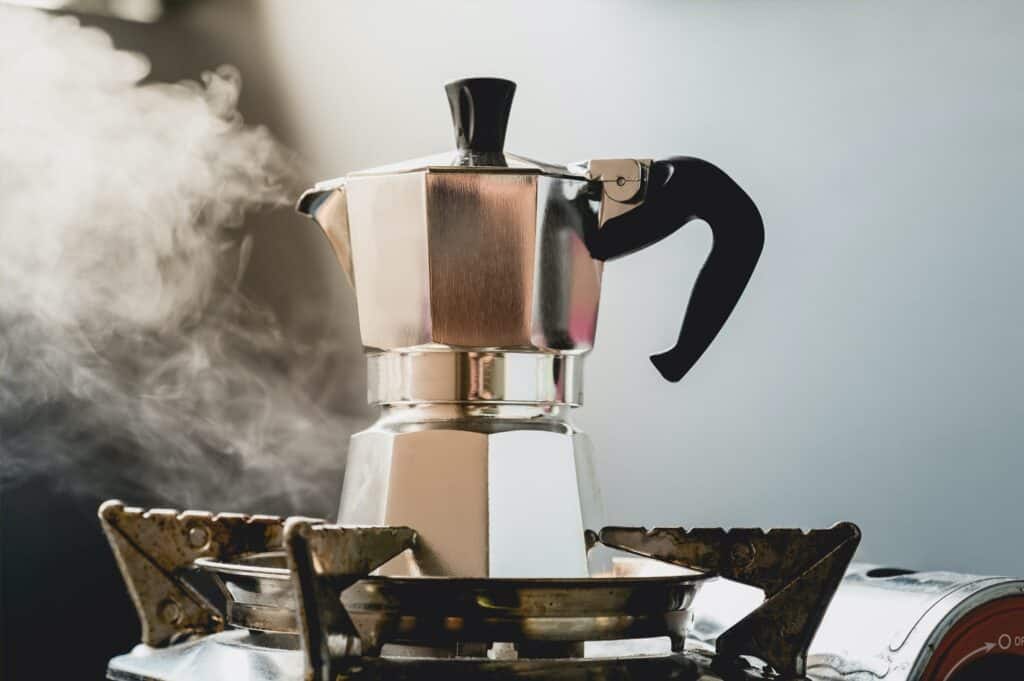
Anatomy of the Moka Pot
Understanding the structure of the Moka pot is key to mastering the art of brewing with it. The Moka pot consists of three main parts:

- Bottom Chamber (Water Reservoir):
- This is where you fill the pot with water. When heated, the water generates steam and pressure, which forces the water up through the coffee grounds.
- It’s essential to fill this chamber only up to the safety valve to prevent over-pressurization and ensure proper extraction.
- Filter Basket (Coffee Chamber):
- This middle section holds the coffee grounds. It’s a perforated basket that sits between the water chamber and the top collector.
- The coffee should be evenly distributed in the basket but not tamped down, allowing the steam to pass through smoothly.
- Top Chamber (Coffee Collector):
- This is where the brewed coffee collects after passing through the coffee grounds.
- The coffee is funneled up through a central tube and into this chamber, ready to be poured into your cup.
Each part of the Moka pot plays a crucial role in the brewing process. The bottom chamber creates the necessary pressure, the filter basket holds and infuses the coffee, and the top chamber collects the final brew, ensuring it maintains its optimal temperature until served.
Choosing the Right Moka Pot
Selecting the perfect Moka pot for your coffee needs is crucial to ensuring you get the best possible brew. Here are some key considerations to keep in mind when choosing your Moka pot:

- Size and Capacity
- Moka pots come in various sizes, typically measured by the number of espresso cups they produce. Common sizes include 1-cup, 3-cup, 6-cup, and 9-cup pots. A 1-cup Moka pot produces about 2 ounces of coffee, while a 6-cup pot makes around 12 ounces.
- Choose a size that fits your coffee-drinking habits. If you’re brewing just for yourself, a smaller pot will do. For family use or entertaining guests, a larger pot might be more suitable.
- Remember, Moka pots work best when filled to their full capacity, so select a size that matches your typical coffee consumption.
- Material Options: Aluminum vs. Stainless Steel
- Aluminum Moka Pots: The original Moka pots, like the classic Bialetti, are made of aluminum. Aluminum heats up quickly and evenly, making it ideal for the Moka pot’s brewing process. However, it can react with acidic coffee, potentially affecting the flavor over time. Aluminum pots also require more careful cleaning to avoid oxidation.
- Stainless Steel Moka Pots: These pots are durable, non-reactive, and often preferred for their modern look and easy maintenance. Stainless steel pots tend to be more expensive but offer longevity and a neutral impact on coffee flavor. They are also compatible with induction stovetops, unlike many aluminum models.
- Consider your preferences and priorities—whether you value traditional aesthetics and quick heating of aluminum or the durability and low maintenance of stainless steel.
- Design and Aesthetics
- Moka pots come in various designs, from the classic octagonal shape to more contemporary styles. While aesthetics won’t impact the coffee’s taste, choosing a design that you enjoy can enhance your overall brewing experience.
- Some Moka pots come with ergonomic handles, safety valves, and other features that can improve usability and safety.
- Compatibility with Heat Sources
- Ensure your chosen Moka pot is compatible with your stove type. While most are suitable for gas and electric stoves, not all aluminum pots work on induction stovetops. Stainless steel models usually offer more versatility in this regard.
Step-by-Step Instructions to Brew Coffee with a
Moka Pot
You don’t need to be a barista with a fancy mustache and suspenders to get this right; you just need to follow the steps on how to brew using Moka Pot. And I’ve even jazzed ’em up with snazzy names for your reading pleasure.
Water
Grab some filtered water and fill the bottom chamber up to the safety valve. Be careful not to cover the valve; we don’t want any steamy surprises. Oh, and use hot water to kickstart the process. Trust me, your coffee will thank you.
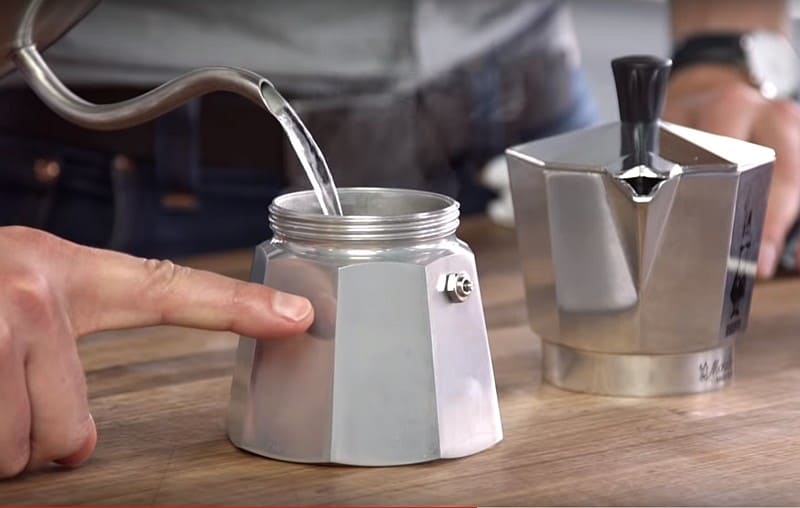
Bean Business
Time for the soul of the operation—those precious coffee beans. You’re gonna want a fine but not too fine grind. Think sand, not powder. Load the filter basket evenly but don’t press down too hard; we’re making coffee, not building a sandcastle.
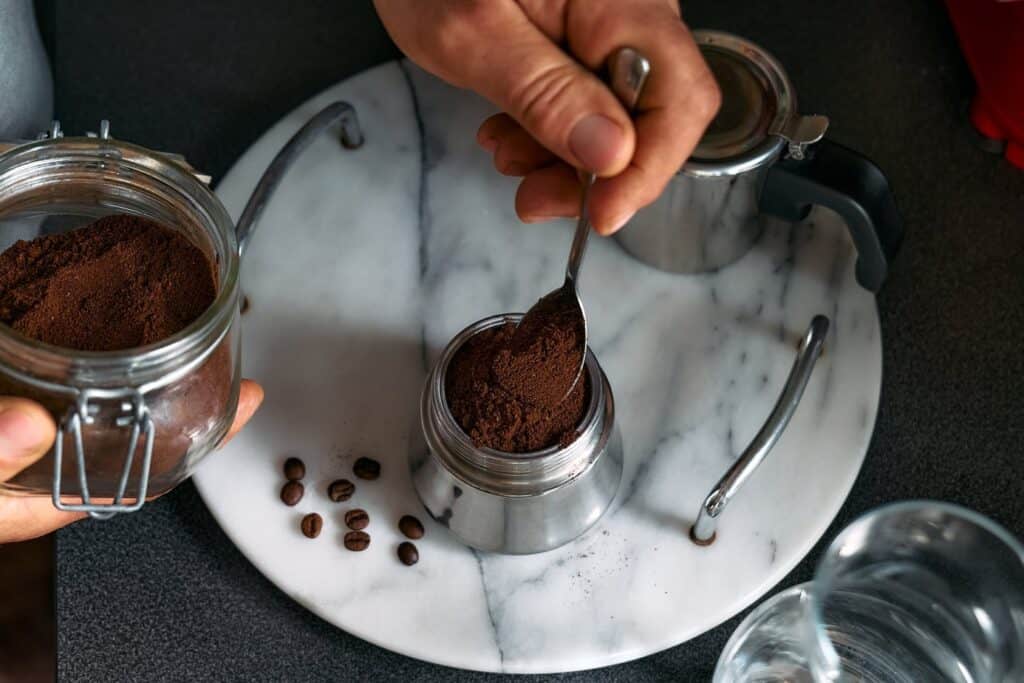
Seal
Place the loaded filter basket into the bottom chamber, and screw on the top part. Tight, but not Thor-hammer tight. You want to seal in the goodness, not wage war against it.
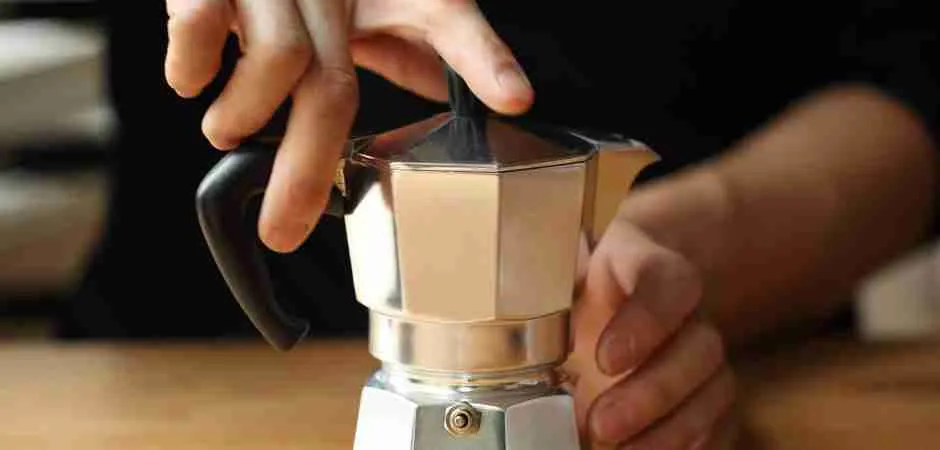
Stovetop
Place your assembled Moka Pot on low to medium heat. Keep that lid open to catch the first coffee streams, and close it when the chamber starts filling up. You’ll hear a hissing sound, signaling the climax of this coffee opera.
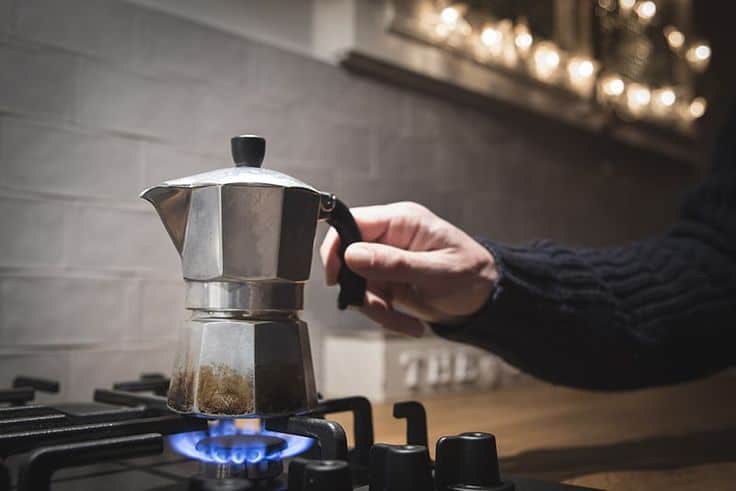
Pour
Once the top chamber is full, remove the Moka Pot from heat. Give it a stir and pour it into your favorite mug. You’ve just hit coffee nirvana, my friend.
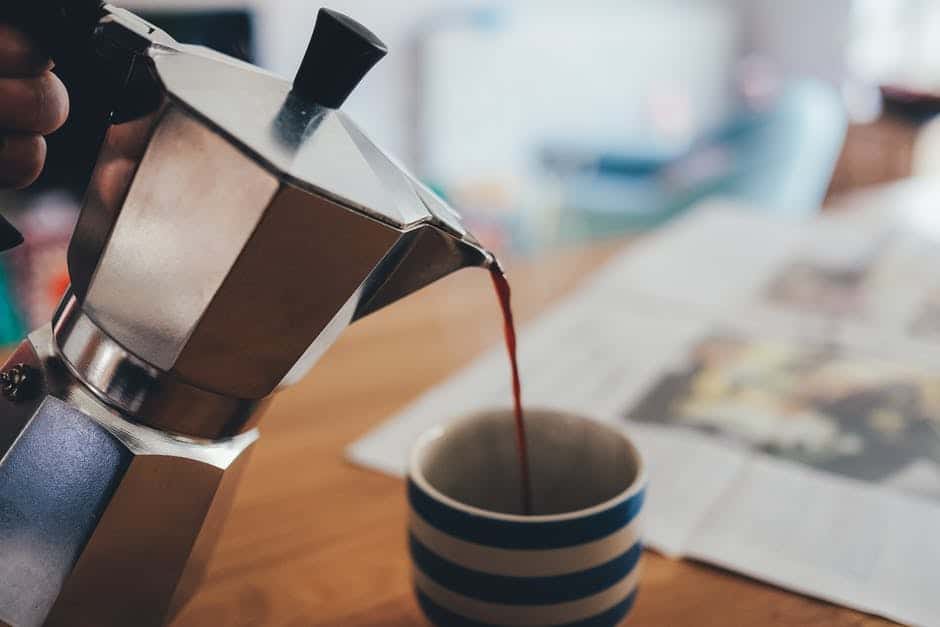
Pre-Brewing Considerations
Before you start brewing with your Moka pot, there are a few key considerations to ensure you get the best possible coffee:

- Heat Management: Think of your stove’s heat like you’d think of hot sauce in a recipe. Too little and it’s bland; too much and you’ve ruined dinner. That’s right—aim for that Goldilocks zone of low to medium heat to avoid scalding or under-extracting your coffee.
- Grind Size: Too fine, and you’ll risk over-extraction and bitterness. Too coarse, and you’ll end up with coffee that’s as weak as a limp handshake. What you want is a nice, medium-fine grind that’s just right for the Moka Pot.
- Freshness Counts: Ever taste bread that’s a week past its prime? Yuck. Same goes for coffee. Freshly ground beans are the way to go—because if you’re going to do it, do it right.
Enhancing Your Moka Pot Coffee
You’re no rookie anymore, and it’s time to upgrade your Moka mojo. If you’ve been cruising on the basic route, it’s time for a little detour through advanced territory. Strap in!
Pre-Infusion Wisdom:
Think of this as the yoga stretch before the coffee marathon. Add hot water to your grounds in the filter, let them sit for about 30 seconds, and then assemble and brew. This helps with a more balanced extraction.
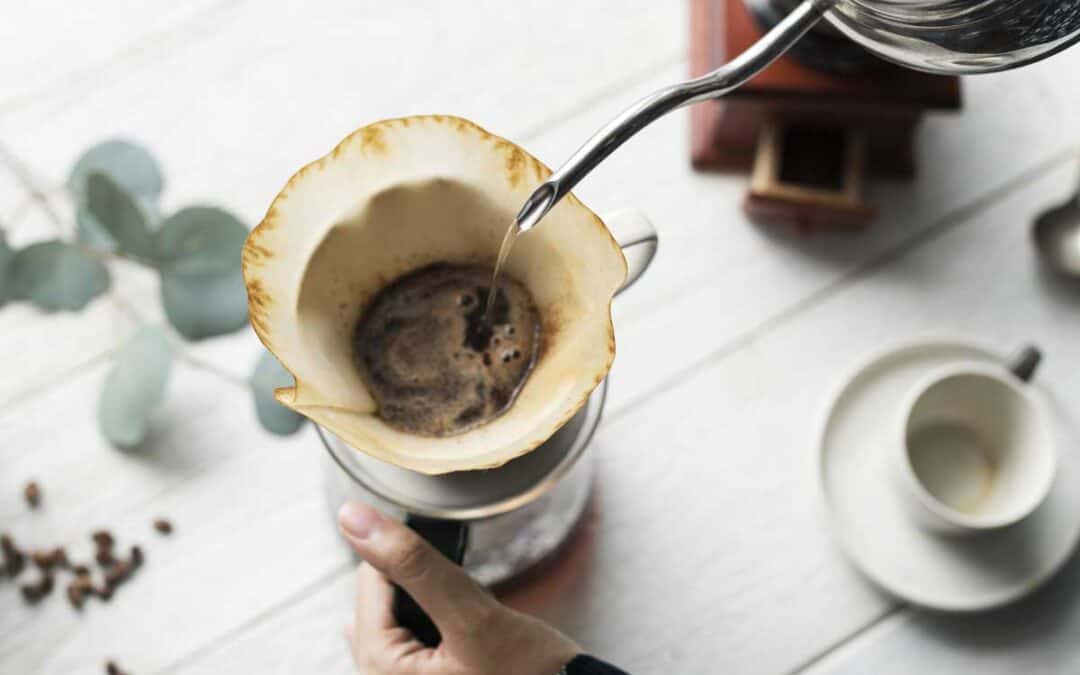
Flavor Ventures:
You don’t eat the same meal every day, so why drink the same coffee? Experiment with different beans—single-origin, blends, light roast, dark roast. Each brings a unique flair to your cup.

Common Mistakes and Troubleshooting
Brewing coffee with a Moka pot is fairly straightforward, but there are some common pitfalls that can affect the quality of your brew. Here are some mistakes to avoid and tips for troubleshooting:
- Overfilling the Water Chamber
- Mistake: Adding too much water, above the safety valve level.
- Troubleshooting: Fill the water chamber only up to the safety valve. Overfilling can lead to uneven extraction and weak coffee. If the coffee is watery or the pot is sputtering excessively, check your water level.
- Using the Wrong Grind Size
- Mistake: Using coffee that’s ground too fine or too coarse.
- Troubleshooting: Use a medium-fine grind, similar to table salt. Too fine a grind can clog the filter and create too much pressure, leading to bitter coffee. Too coarse a grind will result in under-extracted, weak coffee.
- Incorrect Coffee Amount
- Mistake: Overfilling or underfilling the filter basket.
- Troubleshooting: Fill the filter basket to the top and level it off without tamping down. Tamping the coffee can block the flow of water and cause over-extraction, resulting in bitter coffee.
- Inconsistent Heat
- Mistake: Using high heat or fluctuating temperatures.
- Troubleshooting: Maintain a consistent medium heat. High heat can cause the coffee to boil too rapidly, leading to a burnt taste. If the coffee is taking too long to brew or is coming out in bursts, adjust the heat to ensure a steady flow.
- Not Pre-Heating the Water
- Mistake: Using cold water, leading to prolonged brewing times.
- Troubleshooting: Use pre-heated water to reduce the time the Moka pot spends on the stove. This helps prevent the coffee grounds from overheating and becoming bitter.
- Leaving Coffee on the Stove Too Long
- Mistake: Letting the pot sit on the stove after brewing.
- Troubleshooting: Remove the Moka pot from the heat as soon as you hear the hissing sound and the top chamber is nearly full. Leaving it on the heat can lead to over-extraction and bitterness.
- Improper Cleaning
- Mistake: Using soap or abrasive materials to clean the Moka pot.
- Troubleshooting: Clean the Moka pot with warm water and a soft cloth or sponge. Avoid using soap as it can leave residues that affect the flavor of future brews. Make sure all parts are dry before reassembling to prevent any mold or mildew.
Cleaning and Maintenance
Proper cleaning and maintenance of your Moka pot are essential to ensure it brews delicious coffee for years to come. Here’s how to keep your Moka pot in top condition:

- Regular Cleaning After Each Use
- Disassemble the Pot: After brewing, allow the Moka pot to cool down before disassembling it. Separate the top chamber, the filter basket, and the bottom chamber.
- Rinse Thoroughly: Rinse all parts with warm water. Avoid using soap, as it can leave a residue that affects the coffee’s taste. A simple rinse is usually sufficient to remove coffee oils and grounds.
- Remove Coffee Grounds: Make sure to remove all coffee grounds from the filter basket and the bottom chamber. Grounds left behind can lead to bitterness in future brews.
- Dry Completely: Dry all parts thoroughly before reassembling. This helps prevent mold and mildew, which can develop in damp environments.
- Deep Cleaning
- Monthly Deep Clean: Perform a deeper cleaning once a month to remove any stubborn coffee oils or mineral buildup.
- Use Vinegar Solution: Soak the parts in a solution of equal parts water and white vinegar for about 30 minutes. This helps dissolve mineral deposits and coffee oils.
- Scrub Gently: Use a soft brush or cloth to gently scrub all parts, paying special attention to the filter basket and the safety valve. Avoid using abrasive materials that can scratch the surfaces.
- Rinse and Dry: Rinse all parts thoroughly with warm water and dry completely before reassembling.
- Maintaining the Seal
- Check the Gasket: Regularly inspect the rubber gasket (seal) for wear and tear. Over time, the gasket can degrade, leading to leaks and reduced pressure during brewing.
- Replace When Needed: If the gasket appears cracked or worn, replace it with a new one. Replacement gaskets are readily available and inexpensive.
- Handling and Storage
- Store Disassembled: If you’re not using your Moka pot regularly, store it disassembled. This prevents moisture buildup and keeps the parts dry and clean.
- Avoid Using Soap: Consistently avoid using soap on your Moka pot, as it can leave a residue that impacts the flavor of your coffee. If you must use soap, ensure it’s thoroughly rinsed off.
- Tips for Longevity
- Use Filtered Water: Using filtered water not only improves the taste of your coffee but also reduces mineral buildup in your Moka pot.
- Avoid Dishwasher: Do not put your Moka pot in the dishwasher. The high temperatures and detergents can damage the pot’s finish and components.
Conclusion
The Moka pot is a timeless coffee brewing method that offers numerous benefits, making it a favorite among coffee enthusiasts worldwide. Here’s a recap of why the Moka pot stands out:
Benefits of Using a Moka Pot:
- Rich, Full-Bodied Coffee: The Moka pot brews coffee with a strong, rich flavor that closely resembles espresso, thanks to its unique pressure-based extraction method.
- Affordability: Compared to expensive espresso machines, Moka pots are budget-friendly and provide excellent value for money.
- Simplicity and Durability: With its straightforward design and sturdy construction, the Moka pot is easy to use and built to last, requiring minimal maintenance.
- Versatility: Whether you enjoy your coffee black, with milk, or with added flavors, the Moka pot allows for endless customization to suit your taste.
- Compact and Portable: The Moka pot’s compact size makes it ideal for small kitchens, travel, and camping, allowing you to enjoy great coffee anywhere.
Encouragement to Experiment and Enjoy the Process: Using a Moka pot is more than just a way to make coffee—it’s an experience. Don’t be afraid to experiment with different beans, grind sizes, and brewing techniques. Try beans from various origins, adjust your grind size, and play with brewing times and temperatures to find your perfect cup. Each tweak offers a new opportunity to discover unique flavors and aromas.
Remember, the key to great coffee is not just in the method but in the joy of the process. Enjoy the ritual of grinding fresh beans, filling the pot, and savoring the anticipation as your coffee brews. Whether you’re starting your day or taking a moment to relax, let the Moka pot enhance your coffee experience. Happy brewing!
Disclosure: Our blog contains affiliate links to products. We may receive a commission for purchases made through these links. However, this does not impact our reviews and comparisons. We try our best to keep things fair and balanced, in order to help you make the best choice for you.

